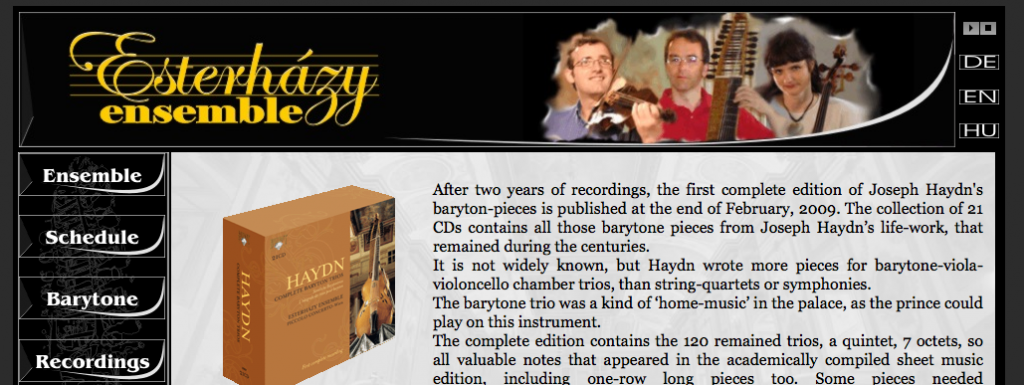 As I noted in yesterday’s post, I used to think baryton was the name of a place, perhaps a city like Berlin or London. Or Narnia, for that matter.
As I noted in yesterday’s post, I used to think baryton was the name of a place, perhaps a city like Berlin or London. Or Narnia, for that matter.
Now I know baryton is the name of a type of instrument that resembles a viola.
But with more strings.
And with a raspier, deeper sound. Not smooth like a violin. The sound of a baryton, to me, is like the harpsichord version of a piano. A bit wilder, rougher around the edges.
For more information about the baryton, as well as what prompted Haydn to compose these Baryton Trios, please visit what I wrote yesterday. I won’t bore you with repeating myself today.
However, I will remind you (or tell you for the first time if you’re just popping in) that Prince Esterhazy commanded Haydn to write music for the baryton so that he – the prince – could play them. In addition, baryton trios are, according to my research, written for average musicians, amateurs. They’re not complicated. They’re fairly rudimentary. And, so far, with one exception, in the key of A.
That may be fine for amateur baryton players. But for an audience expecting something challenging to hear it’s a bit of a problem.
I’ll just get right to Haydn’s Baryton Trios Nos. 8-12 and 14.
Finally! A baryton trio with pep! Movement III (“Presto”) of Baryton Trio No. 8 in A actually made me sit up and take notice. Literally. I was slumped in my seat, sipping Light Roast coffee, when the first few notes of this movement began to play. I sat up and looked a the back of the CD booklet to read what I was hearing. Baryton Trio No. 8 in A, Movement III, which is – sadly – over much too soon.
Hey! Another trio with pep! It’s Movement III (“Finale: Allegro di molto”) of Baryton Trio No. 9 in A. I like these trios when the break out of their lugubrious pacing and let rip.
That’s not to say that the musicians aren’t doing a fine job. They are. They’re brilliant. It’s just that I don’t think Haydn gave them much to work with.
 Here are the members of the Esterhazy Ensemble playing today’s Baryton Trios:
Here are the members of the Esterhazy Ensemble playing today’s Baryton Trios:
Michael Brussing baryton
Andras Bolyki viola
Maria Andrasfalvy-Brussing cello
Here’s what I listened to this morning. NOTE: All were composed between 1765 and 1773, except for No. 10 and No. 14; their composition dates appear to be unknown. Haydn was 33 – 41 years of age.
Haydn Baryton Trio No. 8 in A
Haydn Baryton Trio No. 9 in A
Haydn Baryton Trio No. 10 in A
Haydn Baryton Trio No. 11 in D
Haydn Baryton Trio No. 12 in A
Haydn Baryton Trio No. 14 in D
Frankly, I think it would take a trained musicologist to tell the difference between these trios. They all pretty much sound the same to me.
